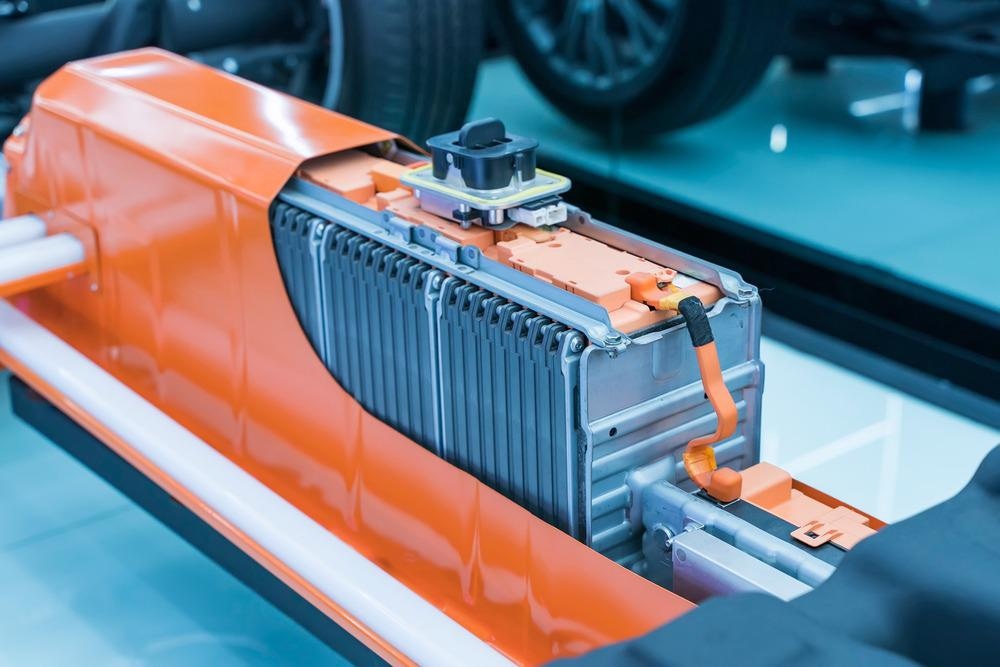
Image Credit: asharkyu/Shutterstock.com
In this environmentally conscious world, fossil fuels are being shunned in favor of renewables for electricity generation and transportation. Due to their periodic nature, excess energy generated by renewables is frequently stored in batteries. However, these often add extra weight to the cars and consumer electronics they power.
Researchers from the Chalmers University of Technology in Sweden have developed a structural battery that is ten times better than all previous versions and paves the way for an essentially massless energy storage system for electric vehicles (EVs) and other technology.
Vanishing Battery Weight
Unlike today’s batteries, which constitute a large part of a vehicle’s weight without performing any load-bearing functions, structural batteries act as a power source and form part of the body. It is called ‘massless’ energy storage because rather than add extra weight to the vehicle, it becomes part of the load-bearing structure – the battery’s weight essentially vanishes.
For EVs to be more efficient, better energy storage is required, but the overall weight needs to be maintained or reduced. Calculations suggest that multifunctional batteries, which form part of the vehicle’s structure, could significantly reduce the weight of an EV, and may even make all-electric aircraft a reality.
Massless Energy Storage – Structural battery with record performance
Video Credit: Chalmers University of Technology/YouTube.com
Striding Forward Towards Carbon Fiber
The US Army Research Laboratory (ARL) first attempted to create a structural battery composite in 2007 using carbon fiber lamina as an electrode. Inspired by this work, Chalmers researchers have made many discoveries involving certain types of carbon fiber over the years, finding that it is both stiff and strong, with a good ability to chemically store electrical energy.
However, making batteries with both good electrical properties and mechanical characteristics has been difficult. Their recent breakthrough presents a structural battery with properties that surpass all previous results in terms of electrical energy storage, stiffness, and strength. Its multifunctional performance is ten times higher than earlier prototypes.
“Previous attempts to make structural batteries have resulted in cells with either good mechanical properties, or good electrical properties,” explains Leif Asp, Professor in the Department of Industrial and Materials Science, and leader of the project. “But here, using carbon fiber, we have succeeded in designing a structural battery with both competitive energy storage capacity and rigidity.”
The Battery
Both electrode materials – carbon fiber at the negative, and a lithium-iron-phosphate-coated aluminum foil at the positive electrode - contribute to the mechanical properties of the structural battery. The carbon fiber serves as a host for lithium and stores energy, and, because it also conducts electrons, it helps to reduce weight by negating the need for copper and silver conductors.
The electrodes are separated by a fiberglass fabric in an electrolyte matrix, which was developed by colleagues at KTH Royal Institute of Technology, Sweden. The electrolyte helps transport lithium ions between the two battery electrodes, and transfer mechanical loads between carbon fibers and other parts.
The battery has an energy density of 24 Wh/kg, around 20% capacity compared to lithium-ion batteries currently available, but because the weight of the vehicle is significantly reduced, less energy will be required. The lower energy density also makes the vehicle safer, and with a stiffness of 25 GPa, the structure is comparable to other commonly used construction materials.
The Future of the Structural Battery
Researchers are already working on a new project, financed by the Swedish National Space Agency, to further increase the performance of the structural battery. Carbon fiber will replace the aluminum foil as a load-bearing material at the positive electrode, providing greater stiffness and energy density. The fiberglass separator will be also swapped with an ultra-thin variant to yield a greater effect and faster-charging cycles.
Asp says a battery with an energy density of 75 Wh/kg and stiffness of 75 GPa could be achieved, making it about as strong as aluminum, but comparatively, much lighter.
“The next generation structural battery has fantastic potential,” Asp states.
If you look at consumer technology, it could be quite possible within a few years to manufacture smartphones, laptops or electric bicycles that weigh half as much as today and are much more compact.”
Leif Asp, Professor in the Department of Industrial and Materials Science, Chalmers University of Technology
In the longer term, the work could result in electric cars, electric aircraft, and satellites designed with and powered by structural batteries.
“We are really only limited by our imaginations here,” Asp says. “We have received a lot of attention from many different types of companies in connection with the publication of our scientific articles in the field. There is understandably a great amount of interest in these lightweight, multifunctional materials.”
References and Further Reading
Chalmers University of Technology (2021) Big breakthrough for ’massless’ energy storage, News by Cision, https://news.cision.com/chalmers/r/big-breakthrough-for--massless--energy-storage,c3309393. Accessed 7 April 2021.
Asp, L. et al. (2021) A Structural Battery and its Multifunctional Performance, Advanced Energy & Sustainability Research, https://doi.org/10.1002/aesr.202000093
Disclaimer: The views expressed here are those of the author expressed in their private capacity and do not necessarily represent the views of AZoM.com Limited T/A AZoNetwork the owner and operator of this website. This disclaimer forms part of the Terms and conditions of use of this website.